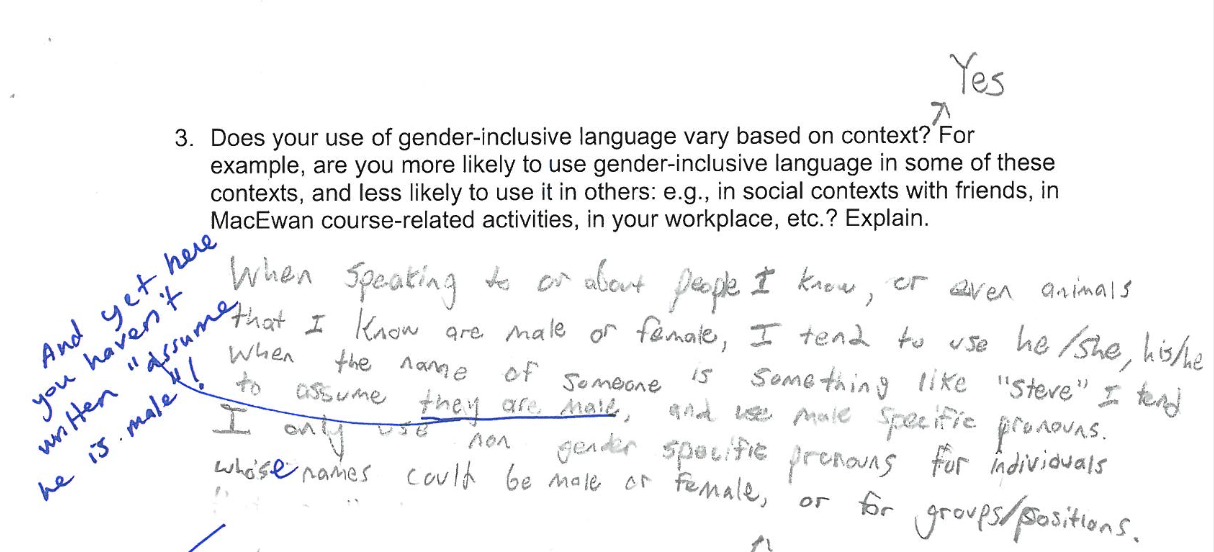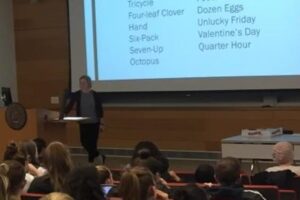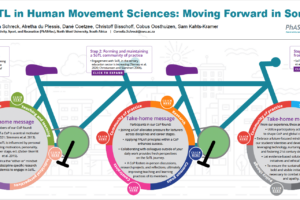
A Case Study on the Value of Humanities-Based Analysis, Modes of Presentation, and Study Designs for SoTL: Close Reading Students’ Pre-Surveys on Gender-Inclusive Language
By Sarah Copland
In the late 2010s, while teaching first-year writing amidst widespread media attention to the singular “they,” I wondered what and where my students had already learned about this gender-inclusive pronoun. And so my SoTL study was born: a grammar module on gender-inclusive language, a pre-quiz, post-quiz, pre-survey, post-survey, and several apparently unrelated assignments.
Because every member of my SoTL faculty learning community adopted qualitative and/or quantitative methodologies, they breezily advised me to analyze my students’ work by coding the pre-surveys, as if coding were something I should already know how to do, requiring no training or expertise. My commitment to adopting a humanities-based methodology for my humanities-based inquiry simply evaporated. At ISSOTL 2019, I presented quantitative and qualitative analysis of students’ pre-survey self-assessments on gender-inclusive language in terms of use, prior knowledge and its contexts, and attitudes before their learning took place.
The following day, prominent humanities-based SoTL researcher Helen Sword began her packed workshop with a shout-out to my presentation (!). She was impressed by my marshalling of social science methodologies and dissemination styles but wondered whether I had to do it that way. Afterwards, I shared with Sword some of the findings I had cut in favour of those I assumed SoTL researchers would deem most interesting and rigorous.
The findings I had cut arose only through the combination of my disciplinary expertise in the subject matter and my disciplinary methodology of close reading, the latter involving attention to the inseparability of a text’s form and content. Sword’s question set me on my path to share a full case study demonstrating what, exactly, close reading shows us about our data that quantitative and qualitative analyses based in the social sciences may not. Heeding calls for diverse forms of SoTL dissemination, I cast my case study as a reflective essay based on my scholarly personal narrative (SPN) as a new, humanities-based SoTL researcher.
Read the TLI article here.




